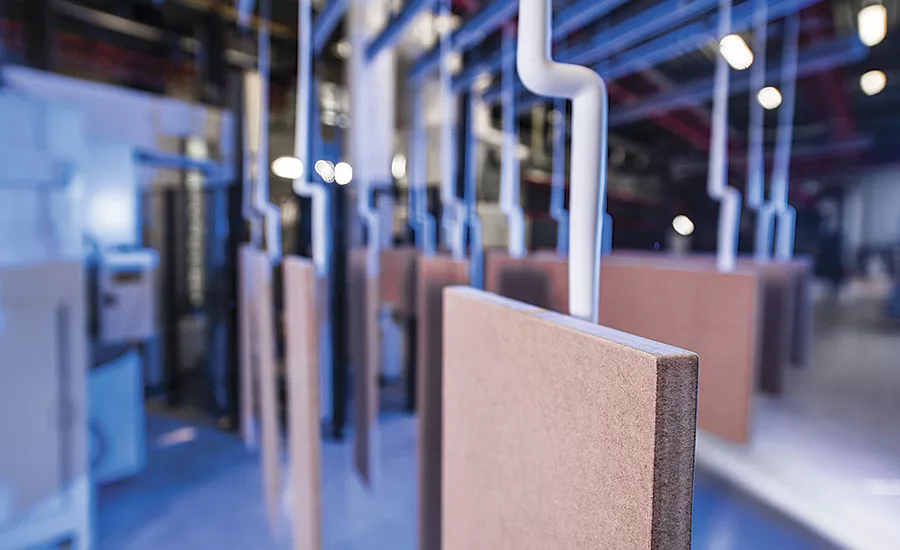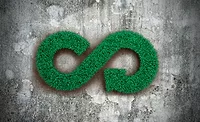A Solution for Powder Coating Heat-Sensitive Substrates

With increasing environmental awareness and air pollution standards becoming more stringent, the demand for environmentally friendly coatings is also increasing. Powder coating is well established as a high-performance, environmentally friendly alternative to traditional solventborne paints. These attributes, together with the unique aesthetic options that are available with powder, have made it the preferred coating technology for many products.
Powder coatings are mainly used for the coating of metals, such as household appliances, aluminum extrusions, and automobile and bicycle parts due to the high temperatures (typically 160-170 °C) that are required to harden the coating. For years, there have been significant efforts towards reducing the curing temperature of powder coatings. This has been the driving force to further reducing the required energy of an already ecological, low-footprint process. This creates an increased demand for low-temperature-curing powder coatings without adverse effect on the curing times, which are also important for lowering manufacturing costs.
Due to recent advances in application and curing equipment technologies, as well as the recent introduction of Uralac® Ultra binder chemistry from DSM Coating Resins, powder coating technology has become a reliable proposition for heat-sensitive substrates, such as engineered and natural woods.
Evolution of Powder Coatings for Heat-Sensitive Substrates
From the first commercial attempts in the early 1990s until only a few years ago, powder coatings for heat-sensitive substrates have provided a viable solution to drive a shift away from liquid coatings. However, the new technology came with a significant degree of uncertainty about the results that this shift would yield.
In terms of thermally cured technologies, several factors hindered the widespread adoption of powder coatings; most prominently, limitations associated with cure temperature/duration imposed by the poor chemical storage stability of catalyzed systems. With regard to UV-cured powders, the inability to cure complex shapes, difficulty curing some colors, and limitations on coating thickness (including poor inter-coat adhesion when applied in multiple coating layers) have made the technology unsuitable for many applications. Aesthetic properties also imposed limits, as the available technologies struggled to achieve the smoothness and gloss versatility requirements of several market spaces.
In addition to the limitations imposed by the available material technologies, advancements in application and curing process technologies were necessary for powder coatings to gain extensive acceptance. The electrostatic variables associated with non-metal substrates made it difficult to control film thickness, and conventional ovens lacked a mechanism to direct and control heat with adequate precision.
Recent advancements in application and curing equipment have helped to overcome the obstacles that hindered the advancement of powder coatings in non-metal applications. In the field of application technology, the development of regulated counter electrodes provided an important step forward. Oven technology, with the advent of catalytic infrared curing systems, now provides an efficient and reliable way to cure powder on heat-sensitive substrates.
Raw material advancements have also aided in this advancement. Uralac Ultra binder chemistry is based on unsaturated polyester, which imparts flexibility, and urethane, which improves durability.
The technology has advanced to such a degree that, for those who have taken a close look at the possibilities, converting to powder coatings is no longer a questionable proposition. Rather, converting to powder coating for heat-sensitive substrates is steadily developing into a competitive necessity.
The Powder Coating Process
The powder coating formulation consists of a binder (resin and crosslinker), pigments and other additives, which determine the specific properties of the powder coating. The powder production process involves mixing, extrusion, milling and sieving steps, after which the powder is typically applied by electrostatic spray to a pre-heated substrate, followed by curing in a specialized catalytic infrared curing chamber at high temperature to allow it to flow and ultimately harden. Once the powder coating has been successfully cured, the finished product is taken off the racks. When using Uralac Ultra, this curing process takes place at 130 °C (265 °F) for 3 min.
The powder coating process offers many advantages compared to the application process of a liquid finish, requiring fewer operational steps and enabling a higher line density. Depending on the substrate, powder coating processing can take place up to 10 times faster than liquid coating, and cost savings can reach 45%, however differs from case to case and needs validation.
The fully automated, one-step application of powder coatings based on Uralac Ultra technology results in reduced rework and minimized sanding. Color changes on the production line can be implemented in a quick and efficient way, without the requirement of additional floor space. From start to finish, the process can be completed in 20 to 30 min, with all surfaces covered in just one step. As the overspray is in solid form, it is easy to collect and re-use, resulting in material utilization of over 90%, and also proves to be less toxic to operators handling the product.
Powder Coating MDF
MDF is an excellent example of a heat-sensitive substrate that can be coated using the described technology. Different powder coating technologies can be used to coat MDF, including hybrid technology, epoxy powders or UV powder coatings. However, when exposed for a relatively short time to temperatures above 140 °C - temperatures needed to harden for hybrid and epoxy systems - MDF shows warping and cracks. This is clearly unacceptable for any decorative or structural application the MDF was intended for. Low-temperature UV-curable powder coatings also have a number of drawbacks, including an inability to produce thick or matte coatings, shade specificity, higher material costs and higher capital equipment requirements.
Uralac Ultra technology enables fully powder coated MDF objects, without exposing the MDF to excessive heat loads. It also provides an opportunity to differentiate finished products by offering superior aesthetic qualities in many colors, gloss levels, textures and finishes that are still challenging for other powder coating technologies for heat-sensitive substrates.
Improved Aesthetics and Performance
As products made from heat-sensitive substrates such as MDF gain a bigger market share, both in interior architecture and furniture manufacturing, the design possibilities and color choices of powder coatings become increasingly important. In line with the market demand for “mass customization,” Uralac Ultra provides an opportunity to differentiate finished products by offering aesthetic qualities in many colors, gloss levels, textures and finishes, including hammer tones, veins and speckles. And it does so even on unusual shapes, edges, hollows and contours, allowing imaginative new substrate designs and semi-assemblies that could not easily be finished with liquid coatings.
The coated surfaces also possess impressive resistance against abrasion and moisture, broadening the scope of market opportunities.
The resin’s versatility also allows for a greater design freedom, being able to be applied on real wood, MDF, HDF and alternative substrates, offering opaque, transparent or glazed surfaces for every design material.
A Greener, More Sustainable Coating Solution
A conversion to powder coatings based on Uralac Ultra allows manufacturers significant environmental advantages, as their environmental footprint will be reduced by integrating a low-temperature bake and a no-water process. The powder coating process also prevents harmful chemicals from damaging the environment, as it involves no VOCs.
In addition, powder coatings based on Uralac Ultra have higher chemical and physical resistance than traditional coating solutions, enabling a reduction in the cost and fuel consumption involved in transportation and storage. A comprehensive Life Cycle Assessment for this technology measures a carbon footprint that is five times lower than solventborne coatings. The eco-footprint for Uralac Ultra, which indicates the impact on resource depletion and climate change, is equally reduced.
Meeting Higher Regulatory Standards
The eco-friendliness of powder coatings based on Uralac Ultra also enables compliance with tighter industry restrictions. Since 2005, the coatings industry in Europe has been subject to the strict environmental guidelines of the Kyoto protocol of 1997, and in recent years these industry guidelines have become even stricter. In light of this, Uralac Ultra-treated products offer a high level of compliance with all major regulatory requirements, and have been submitted to key industry standard tests, such as NEN-EN 12720 (resistance to cold liquids), Blue Wool Scale (discoloration tests) and hinge hole benchmarking (known as swelling test or the Ledro test). These tests confirmed the solution’s excellent humidity, UV light and chemical resistance, and its other high-performance qualities. Furthermore, the architectural product range comes with Environmental Product Declarations that contribute towards LEED credits.
The technology also enables manufacturers to meet increasingly stringent workplace regulatory standards. Since this technology is solvent-free, it reduces fire and application risks, and offers a better disposal of waste. It also reduces the health risks for operators, as any powder can easily be washed off and there are fewer hazardous materials. As manufacturers across the world try to implement safer operational practices, Uralac Ultra technology provides an SHE-compliant solution for a wide variety of markets.
Conclusion
The operational, environmental and performance benefits of Uralac Ultra powder coating technology make it a better choice than the incumbent coating technologies for a wide range of applications, including children’s furniture, bathroom furniture, office furniture, outdoor furniture, and kitchen furniture. With this powder coating technology, manufacturers can lower operational costs, increase end-product value and provide a mechanism for meaningful differentiation.
Looking for a reprint of this article?
From high-res PDFs to custom plaques, order your copy today!







